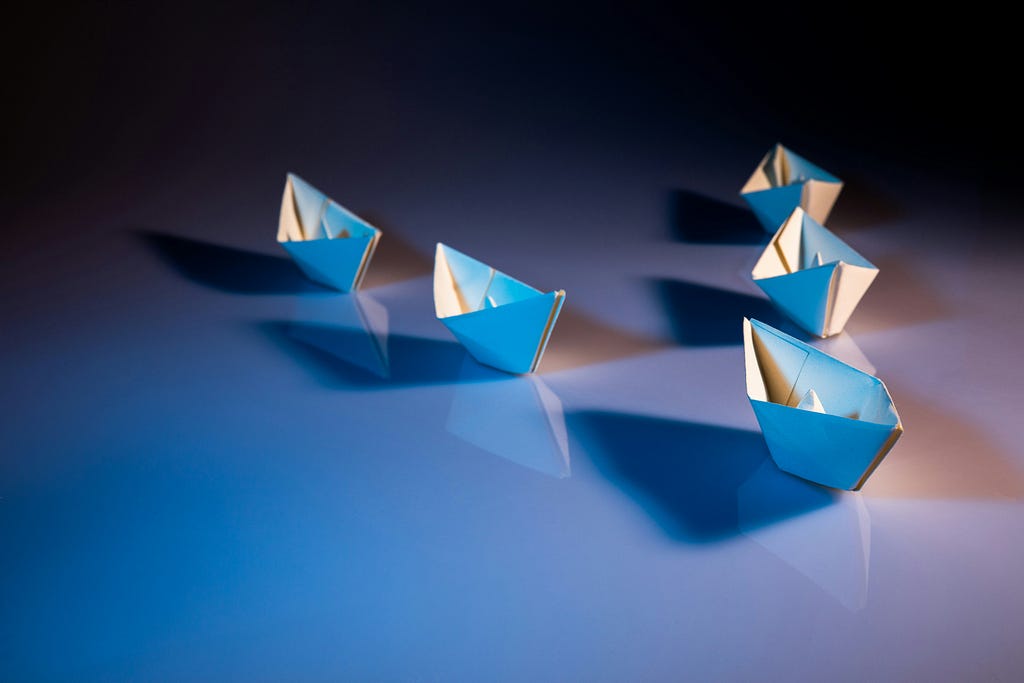The potential of design in leadership

Design is about understanding and solving user problems. It’s about making experiences simple, accessible, and easy to use. Google states that if we “Focus on the user, and all else will follow.”
Yet, in many practices, designers are brought in during the middle of the process, like UX designers or at the end, as with content designers and UI designers.
Breaking free from outdated thinking
Design is often trapped in outdated thinking, where it is viewed merely as the visuals and words that make up the final piece. This approach forces designers to shoehorn design and content into predetermined structures with little context.
We’ve seen that great things can happen when designers are involved early in the process. In some organisations, this is standard practice; in others, it happens by chance. But what if designers were leaders? What if more designers embraced leadership, showing the potential of design to influence business decisions and drive impact?
The designer’s superpower: embracing the unfamiliar
All designers have a superpower. We step into projects where everything is unfamiliar. It’s where we thrive! Designers are ready to absorb new knowledge, learn from subject experts, understand challenges, and build meaningful partnerships.
This fresh perspective and natural curiosity make designers uniquely open to exploring innovative ideas without being limited by biases. Designers aren’t afraid to ask the so-called stupid ‘why’ questions that others might overlook.
This curiosity allows us to see the bigger picture, understand human needs, and consider the wider implications of our solutions beyond just time, cost, and productivity.
The synergy between designers and project managers
Project managers are a designer’s best friend. They excel in planning and operations, skills that complement designers’ focus on ensuring projects meet the needs of their users. Both share a single goal: to ensure that every experience breathes relevance and empathy, meeting real human needs.
Designers don’t just design; we collaborate with the people we’re designing for, ensuring our solutions are appropriate for the user and the business while being deeply impactful.

Aspiring for higher roles in the hierarchy
But designers need to aim higher in the organisational hierarchy. We can become so invested in solving user problems that we tend to forget our superpower can also help solve broader business problems and mature design thinking across the organisation.
Designers should aspire to become leaders, like Chief Design Officers, not just for the title but to broaden our perspectives and take on new responsibilities. This unfamiliar territory pushes us out of our comfort zones, allowing us to influence major decisions and drive substantial change.
The skills designers bring to leadership
As leaders, designers bring invaluable skills to the table:
- Innovation and implementation
We don’t just come up with creative ideas; we ensure they are practical and executable. - Holistic understanding
We consider all viewpoints, making sure every stakeholder’s voice is heard and integrated. - Facilitation
We guide discussions to uncover root causes and viable solutions, helping everyone involved step back and see the broader picture. - Collaboration
We advocate for designs that involve and are validated by the communities they serve, ensuring our solutions are not only accepted but also cherished.
Making a Greater Impact by Leading
If designers move up the ladder, they position themselves to tackle some of the business’s most pressing problems more effectively. This opportunity allows us to become creators and champions for change, integrating human-centred design principles at every decision-making level.
At its heart, design is about understanding and solving human needs. When designers lead, we bring a compassionate, inclusive approach to solving complex problems. We ensure that solutions are technically sound, socially responsible, and sustainable.
Transforming the world with design leadership
So, why should designers become leaders?
Because when we lead, we transform our insights into action, our ideas into movements, and our visions into realities. We don’t just change how things look; we change how the world works.
Enjoyed this?
Check out my other articles on design.
- Can a Content Designer Become Head of User Experience
- UX lessons we can learn from the Marvel Cinematic Universe
- Mythis of the unicorn designer
I hope you enjoyed this article, and if it helped you out, don’t forget to leave a clap or two or drop a comment. You can connect with me on LinkedIn, Medium and BlueSky.
Why designers should become leaders was originally published in UX Planet on Medium, where people are continuing the conversation by highlighting and responding to this story.